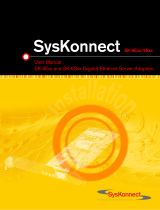Table of Contents
2 Care@Home™ Voice Panic Detector User Guide
Table of Contents
1. Overview ................................................................................................................................................. 3
1.1. Intelligent Voice Activation
™
(IVA) Technology .......................................................................... 3
1.2. Voice Extender Capability .......................................................................................................... 4
2. Installing the VPD.................................................................................................................................... 5
3. Testing the VPD Installation .................................................................................................................. 10
4. Operating the VPD................................................................................................................................. 11
4.1. Sending Notifications ............................................................................................................... 12
4.2. LED Indications ......................................................................................................................... 12
4.3. VPD Supervision ........................................................................................................................ 12
4.4. Disabling Voice Detection ........................................................................................................ 13
4.5. Voice Extender Capability in Action .......................................................................................... 13
4.6. Voice Announcements ............................................................................................................. 15
5. Replacing the Batteries ......................................................................................................................... 16
6. Specifications ........................................................................................................................................ 19
Appendix A Stationary Panic Detector (SPD) .........................................................................................21
Appendix B Installing with Screws ......................................................................................................... 22
Appendix C Recommended Mode of Operation ................................................................................... 24





















